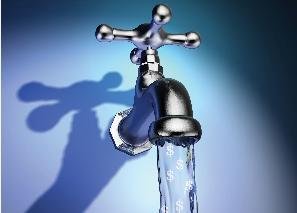Several months back, H2Bid featured a story about the invention and early application of so called “flushless†urinals. These urinals use a combination of hydrostatic pressure and eco-friendly chemistry to create a liquid barrier through which waste can move but sewer vapors cannot escape. After being invented, the early adopters of this technology were mostly novelty users and hard-core environmentalists; now, it seems, many other major consumers of water are finding value in these waterless marvels.
Several US states, Ohio, New York and Delaware among them, have installed flushless urinals at rest stops along major highways. These installations are part of a larger effort to reduce water and electricity usage at these facilities while still offering full-service, modern facilities to travelers; low-volume flush commodes, timed or photo-eye triggered faucets and LED lighting are all becoming commonplace at these rest stations. It is estimated that each flushless urinal saves up to 10,000 gallons of water annually when placed in service in these high-traffic locations. Combine several of these toilets with low-flush models in the ladies’ room then multiply those installations across the land and these states stand to save literally millions of gallons each year.
In addition to highway rest stops, flushless urinals are making their way into other areas of American life. The Grand Canyon National Park, NASA’s Space Flight Center and many business office buildings have retrofitted their facilities to include the devices. In some cases, the issue driving the installation is water availability and wastewater treatment. Such is the case in near the Grand Canyon; the southwest United States is notoriously dry and water rights are a continual point of contention. Saving water is paramount in these locations and the flushless urinals are a means to and end. In the case of the office building installations, however, the driver is often pure economics. Especially in new construction, less flush-urinals means less plumbing which means a lower-cost building and a long-term lower cost for the tenants who need to pay the water bills.
Until recently, the state of Minnesota had gone the opposite direction of these trends, however. In Minnesota, the legislature passed a ban in 2007 prohibiting the installation of flushless urinals. The ban stood for over two years until 2010 when the legislature voted to allow the plumbing code to take flushless urinals into consideration. While there has been considerable hand-waving regarding the reasons for the original ban and the recent lifting, outside observers almost universally agree that the state of Minnesota has moved in the right direction.
It may not be tomorrow that your office building installs flushless toilets but it’s likely that you will be seeing them soon. The technology appears to have proven itself over the last few years to the point that few questions remain regarding its clean, effective operation or its tangible water savings. Flushless toilets stand as a classic example of how technology can effectively address water resource issues.

